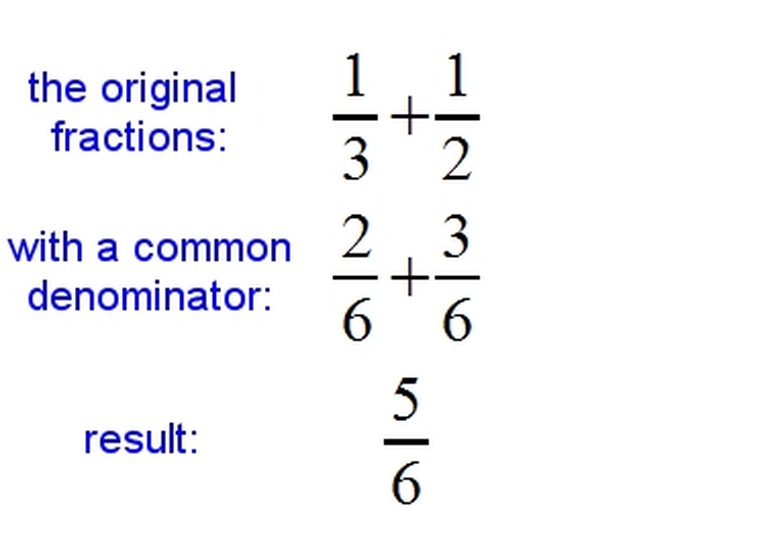Adding & Subtracting Fractions
Adding and subtracting fractions is easy when the denominators are the same. (The denominator is the bottom number in the fraction; the top number is called the numerator.) When fractions have different denominators, there are a few steps you have to follow to find a common denominator so the fractions can be added to or subtracted from each other.
Step 1
Pick the larger denominator of the two fractions you are adding or subtracting. In the problem 1/3 + 1/2, 3 is the larger denominator of the two fractions.
Step 2
List the multiples of the larger denominator. A multiple is a number that another number divides into evenly. In our example, multiples of 3 are 3, 6, 9, 12, 15 and so on.
Step 3
Find multiples for the smaller denominator. The multiples of 2 are 2, 4, 6, 8, 10 and so on.
Step 4
Choose the smallest multiple that is common to both denominators. Six is a common multiple of both 3 and 2. This is the least common denominator.
Step 5
Find the least common denominator for both fractions. (See Section 1.) In the example 1/3 + 1/2, 6 is the least common denominator of both fractions.
Step 6
Rename both fractions using the least common denominator. In the example 1/3 + 1/2, you would write both denominators as a 6.
Step 7
Change the numerators to make equal fractions. Multiply the top number by the number you multiplied by the denominator to get the least common denominator. In the example, 1/3 + 1/2 becomes 2/6 + 3/6. The fraction 1/3 is multiplied by 2 because 3 x 2 = 6. The fraction 1/2 is multiplied by 3 because 2 x 3 = 6.
Step 8
Finish the problem by either adding or subtracting. In the example of 2/6 + 3/6, the answer is 5/6.
Cite This Article
MLA
Hannaford, Amy. "Adding & Subtracting Fractions" sciencing.com, https://www.sciencing.com/adding-subtracting-fractions-4540286/. 24 April 2017.
APA
Hannaford, Amy. (2017, April 24). Adding & Subtracting Fractions. sciencing.com. Retrieved from https://www.sciencing.com/adding-subtracting-fractions-4540286/
Chicago
Hannaford, Amy. Adding & Subtracting Fractions last modified March 24, 2022. https://www.sciencing.com/adding-subtracting-fractions-4540286/
